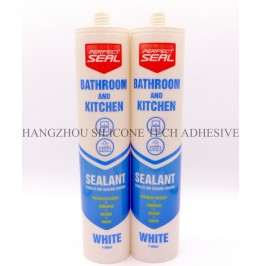Sealants are widely used in construction, automotive, and industrial applications to create airtight, watertight, or dustproof barriers. However, their performance can be significantly compromised when exposed to mold growth. Mold thrives in damp, humid environments and can degrade sealant materials over time, leading to structural, functional, and aesthetic issues. Understanding how mold affects sealant properties is essential for maintaining long-term durability and effectiveness.

Mold colonies often appear as fuzzy, discolored patches on sealant surfaces, but their impact extends beyond visual changes. The presence of mold can lead to physical breakdown of the sealant material, weakening its structural integrity.
Mold secretes enzymes that break down organic compounds in sealants, particularly those containing natural or semi-natural polymers. Over time, this enzymatic activity erodes the sealant’s surface, causing it to become rough, pitted, or powdery. Softening may also occur, as mold metabolizes components of the sealant, reducing its hardness and resistance to abrasion. In bathrooms or kitchens, where moisture levels are consistently high, this erosion can accelerate, leading to premature failure of the sealant.
As mold penetrates deeper into the sealant, it can create micro-channels that allow moisture to infiltrate further. This internal moisture weakens the adhesive bonds within the sealant, making it more prone to cracking under thermal expansion, contraction, or mechanical stress. Flaking may also occur, where small pieces of the sealant detach from the substrate. These issues are particularly problematic in joints subjected to frequent movement, such as those around windows or doors, as they compromise the sealant’s ability to maintain a tight barrier.
Sealants rely on strong adhesion to substrates to perform effectively. Mold growth can disrupt this adhesion, leading to detachment and loss of functionality.
Mold spores often settle in the tiny gaps between the sealant and the substrate during application. As the mold grows, it produces hyphae (thread-like structures) that penetrate these gaps, creating a physical separation. Additionally, mold metabolites can react chemically with the substrate or the sealant itself, reducing the adhesive forces. This weakening is especially concerning in outdoor applications, where exposure to rain, wind, and temperature fluctuations exacerbates the problem.
Many sealants are formulated to be flexible, allowing them to accommodate movement in joints without cracking. Mold growth, however, can stiffen the sealant by consuming its elastic components or altering its chemical structure. As a result, the sealant loses its ability to stretch or compress, leading to joint failure. In dynamic environments, such as those in automotive or aerospace applications, this reduced elasticity can cause the sealant to tear or pull away from the substrate entirely.
Beyond structural and functional issues, mold growth on sealants has aesthetic and health implications that can affect user satisfaction and safety.
Mold colonies often leave behind dark, unsightly stains on sealant surfaces, even after the mold itself has been removed. These stains are caused by pigments or metabolic byproducts produced by the mold. In high-visibility areas, such as kitchen countertops or bathroom tiles, such discoloration can detract from the overall appearance of the space. Additionally, some molds produce acidic compounds that can etch or corrode the sealant, further worsening the aesthetic damage.
Mold spores released into the air from contaminated sealants can contribute to poor indoor air quality. For individuals with allergies, asthma, or respiratory sensitivities, exposure to mold spores can trigger symptoms such as coughing, sneezing, or wheezing. In enclosed spaces, such as offices or residential buildings, the concentration of mold spores can reach harmful levels if mold growth on sealants is left unaddressed. Regular inspection and cleaning of sealants in humid environments are crucial for maintaining healthy indoor air.
Mold growth accelerates the aging process of sealants, reducing their expected lifespan and increasing maintenance costs.
Sealants are designed to withstand environmental stressors like UV radiation, temperature changes, and chemical exposure. However, mold introduces a biological stressor that compounds these effects. The metabolic activity of mold produces heat and chemicals that can degrade the sealant’s polymer chains, causing it to age prematurely. In outdoor applications, such as roofing or facade joints, this accelerated aging can lead to frequent resealing, increasing long-term costs.
The primary function of sealants is to create a watertight or airtight barrier. Mold growth undermines this function by creating pathways for water, air, or dust to penetrate. As mold colonies expand, they displace the sealant material, creating voids that compromise the barrier. In critical applications, such as waterproofing membranes in basements or pools, this can lead to leaks, structural damage, or even mold growth in adjacent materials.
By understanding the multifaceted impact of mold on sealant performance, property owners and maintenance teams can take proactive measures to prevent and address mold growth. Regular inspection, moisture control, and prompt remediation are key to preserving the integrity and longevity of sealants in various environments.
Copyright 2019 by Hangzhou Silicone Tech Adhesive Co., Ltd. All rights reserved.
Bathroom Sealant | Acrylic Sealant | Dow Corning 795 | Aquarium Sealant | Dow Corning 732 | Clear Silicone Sealant | Polysulfide Sealant | Glazing Sealant | Mirror Sealant | IG Sealant
Powered by Onepound